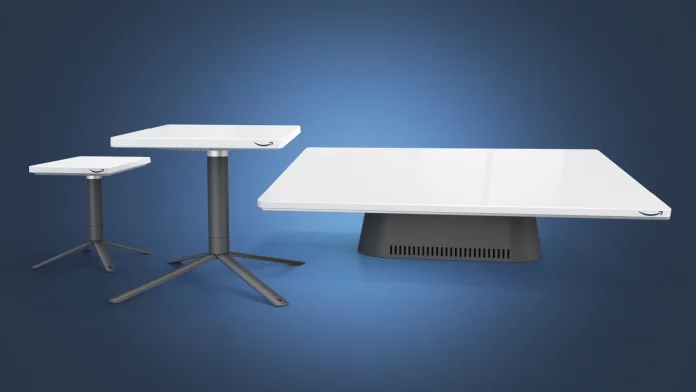Amazon will offer three terminals designed for different use cases
Amazon has given a glimpse at its progress toward its Project Kuiper ambitions of providing low Earth orbit (LEO) satellite-based broadband connectivity for consumers, businesses and IoT applications.
The company provided images and descriptions of three engineering models for customer terminals, as well as an outline of the services that each type is designed to provide.
From smallest to largest, those customer terminals range from:
-An “ultra-compact” terminal that is 7 inches square, weighs one pound and meant to support speeds up to 100 Mbps for low-cost residential and portable service; Amazon said this terminal will also be aimed at “government and enterprise customers pursuing applications like ground mobility and … IoT.”
-The “standard” customer terminal, measuring less than 11 inches square and 1 inch thick, which weighs about five pounds. Amazon says this will be “one of the most powerful commercially available customer terminals of its size” and deliver speeds up to 400 Mbps. Amazon noted that it expects to product the standard terminal for less than $400 per unit.
-A “high-bandwidth” design for enterprise, government and telecom applications that can support speeds up to 1 Gbps. The terminal measures 19 inches by 30 inches.
All three terminals use the Amazon-designed Prometheus baseband chip, which is also used in the Kuiper satellites and ground gateway antennas. Amazon describes the chips as combining “the processing power of a 5G modem chip found in modern smartphones, the capability of a cellular base station to handle traffic from thousands of customers at once, and the ability of a microwave backhaul antenna to support powerful point-to-point connections.” The chips allow the Project Kuiper system to process up to 1 terabit per second of traffic on board each satellite, according to the company.
Project Kuiper hasn’t officially launched yet, but Amazon reiterated plans to deploy its first two prototype satellites via United Launch Alliance’s Vulcan Centaur rocket, which is currently undergoing launch preparations at Cape Canaveral. Those first two satellites will enable end-to-end testing of the communications network, Amazon said.
Meanwhile, Amazon said that its Project Kuiper operations are already focused on scaling to support terminal production and service for the “tens of millions of customers” that the company wants to serve. That includes work on a facility that is expected to be mass-producing satellites by the end of this year, with the first production satellites expected to launch in the first half of 2024 and offer service to early customers later in 2024.

